Camino de Santiago del Norte
Day 17
This is a camino of gratitude for me. Each day, I choose something I am grateful for in my life and think and journal about it throughout the day. I will share an excerpt from my journal entries at the end of each day’s post.
Day 17: Ribadesella to La Isla ~ 10.5 miles
7 October 2017
In the morning, the Camino took me along Ribadesella’s promenade and then through apartment-lined streets into the countryside. The beach was beautiful, but very developed—Asturian-style mansions were built along the waterfront more than a century ago and they have been well maintained.
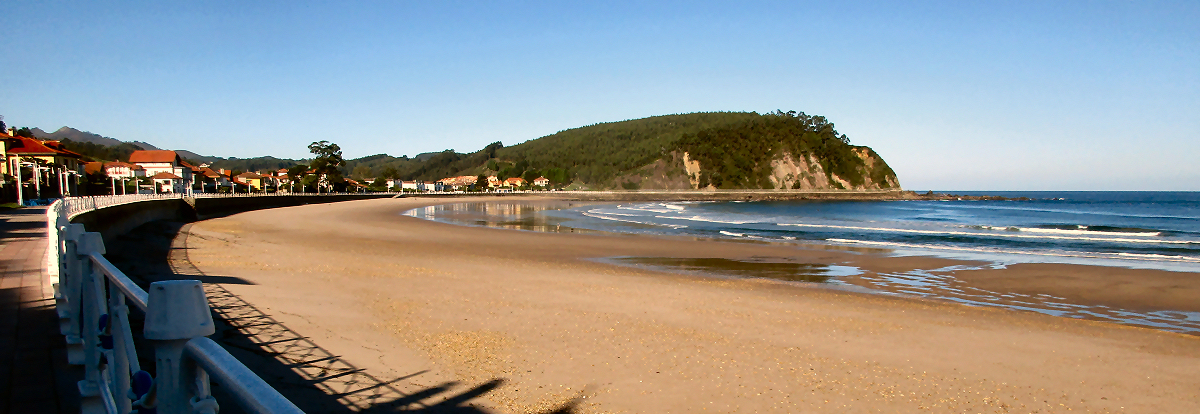
By noon I was approaching the sweet village of La Vega.
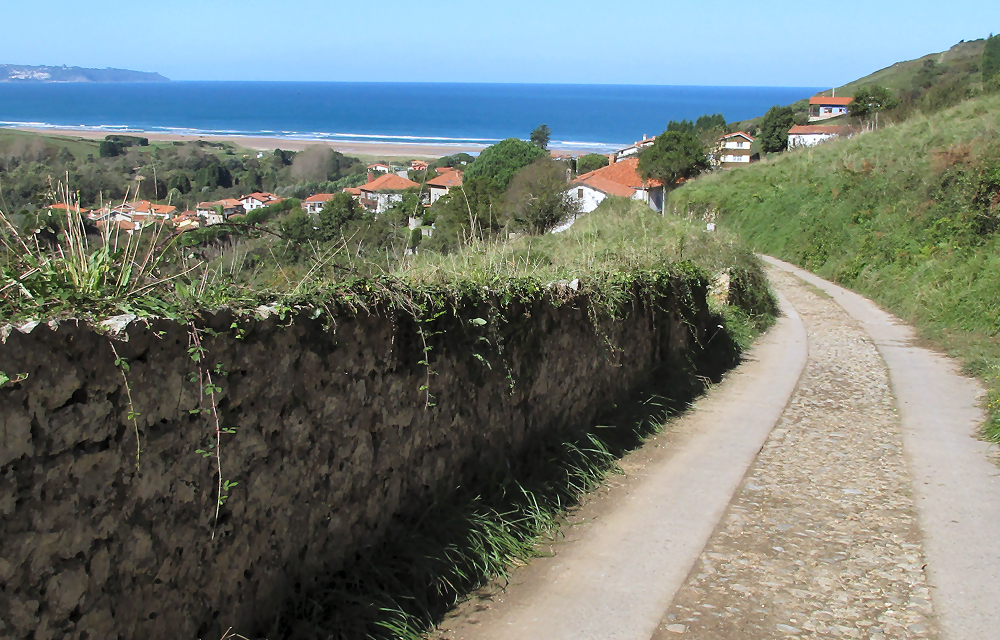
The village was special enough just in itself…narrow cobbled streets, stone houses…exactly what you would think of for a traditional village in Spain.
But imagine my surprise when I came upon these trompe l’oeil paintings! A local artist created these life-like works on the walls of his house.
I have not been able to learn the artist’s name, but here is a self-portrait of him, looking out of a window, as if to say, “What are you taking photos of?”
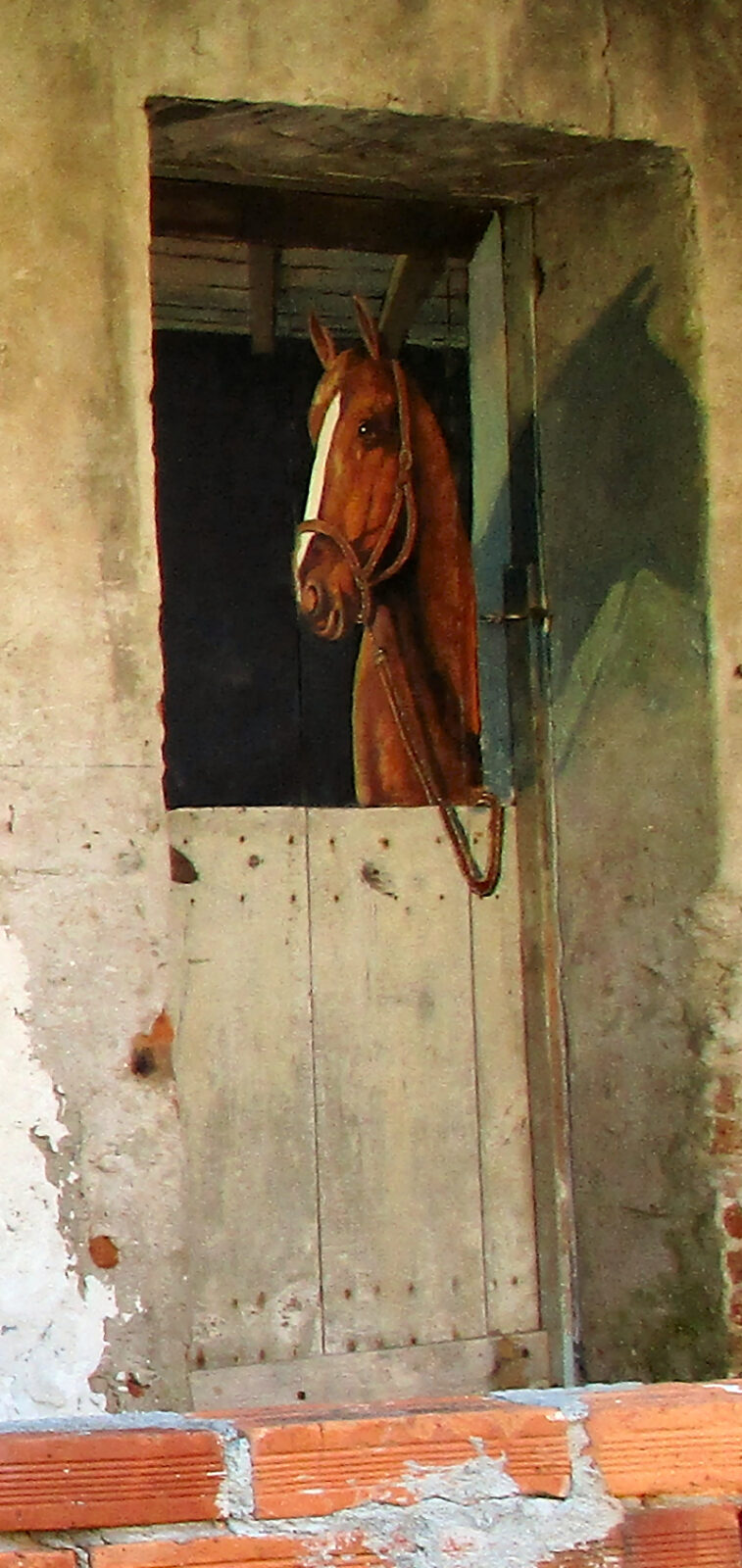

I could have stayed here for a couple hours studying all the details, but that would not get me to the next albergue.
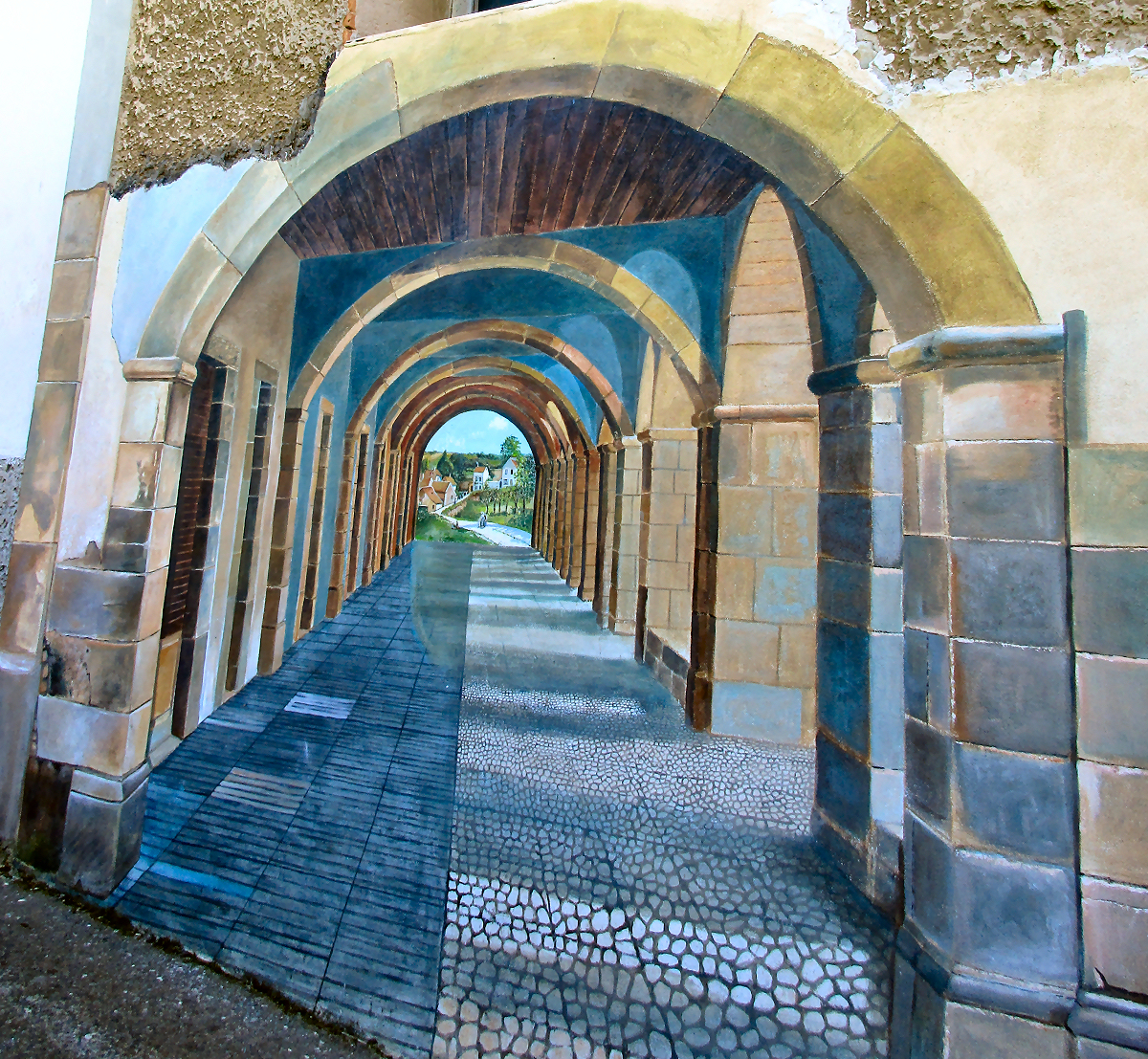
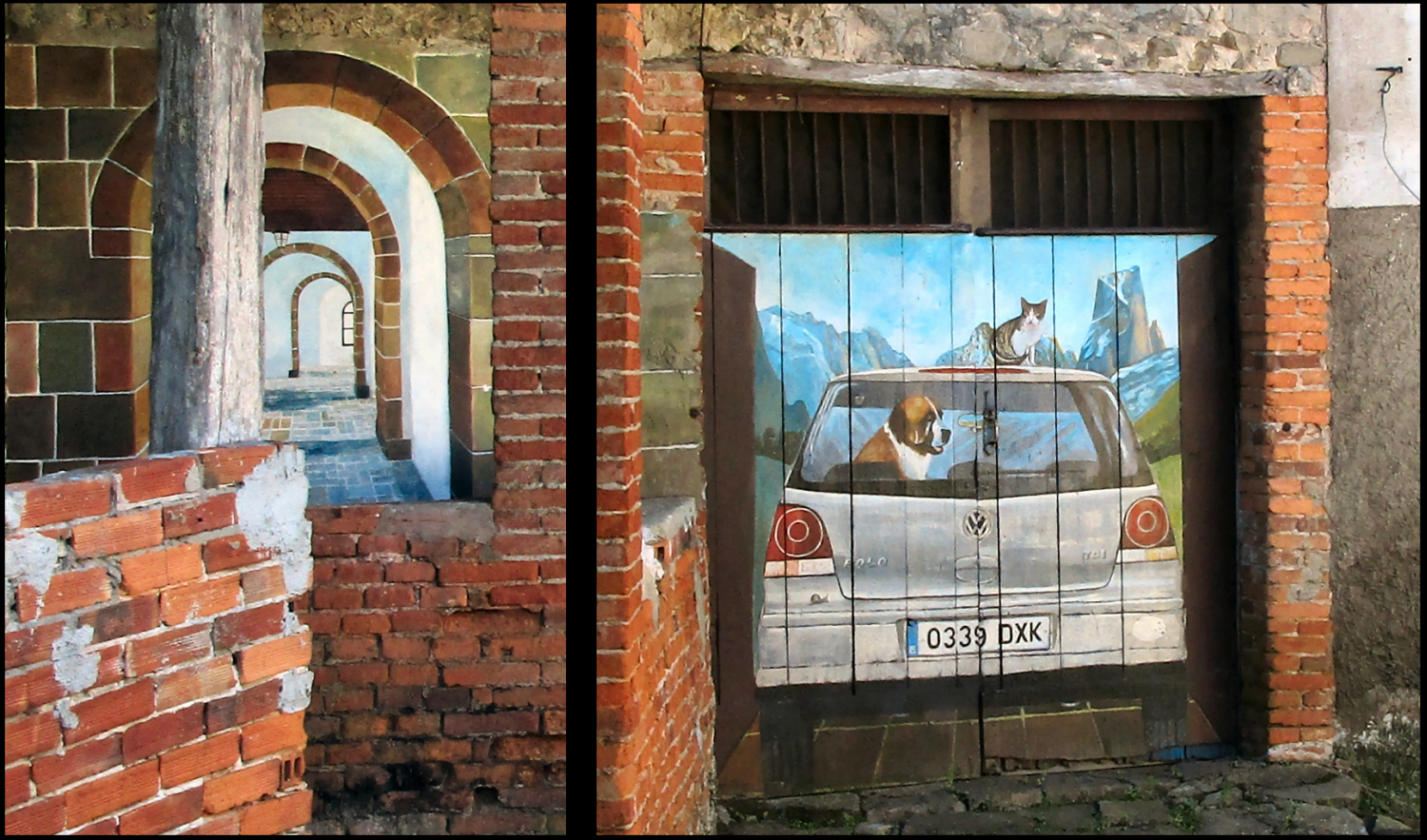
And as I left the village, I encountered a new kind of structure, a horreo (pronounced “oreo” like the cookie, but remember to roll the “r’s”). Horreos are used like root cellars—to keep vegetables and grains through the winter. They are almost always built from chestnut, which slowly turns black making them look like they have been burnt. (For this reason, at first, I wondered if they were used for smoking meat.) They are built up off the ground with a large flat stone between the pedestals and the floor to keep rodents from climbing in.
These little buildings would become more and more plentiful as I continued deeper into Asturias. Nowadays, some have been converted into bedrooms and are rented out via AirBnB for a hefty price.
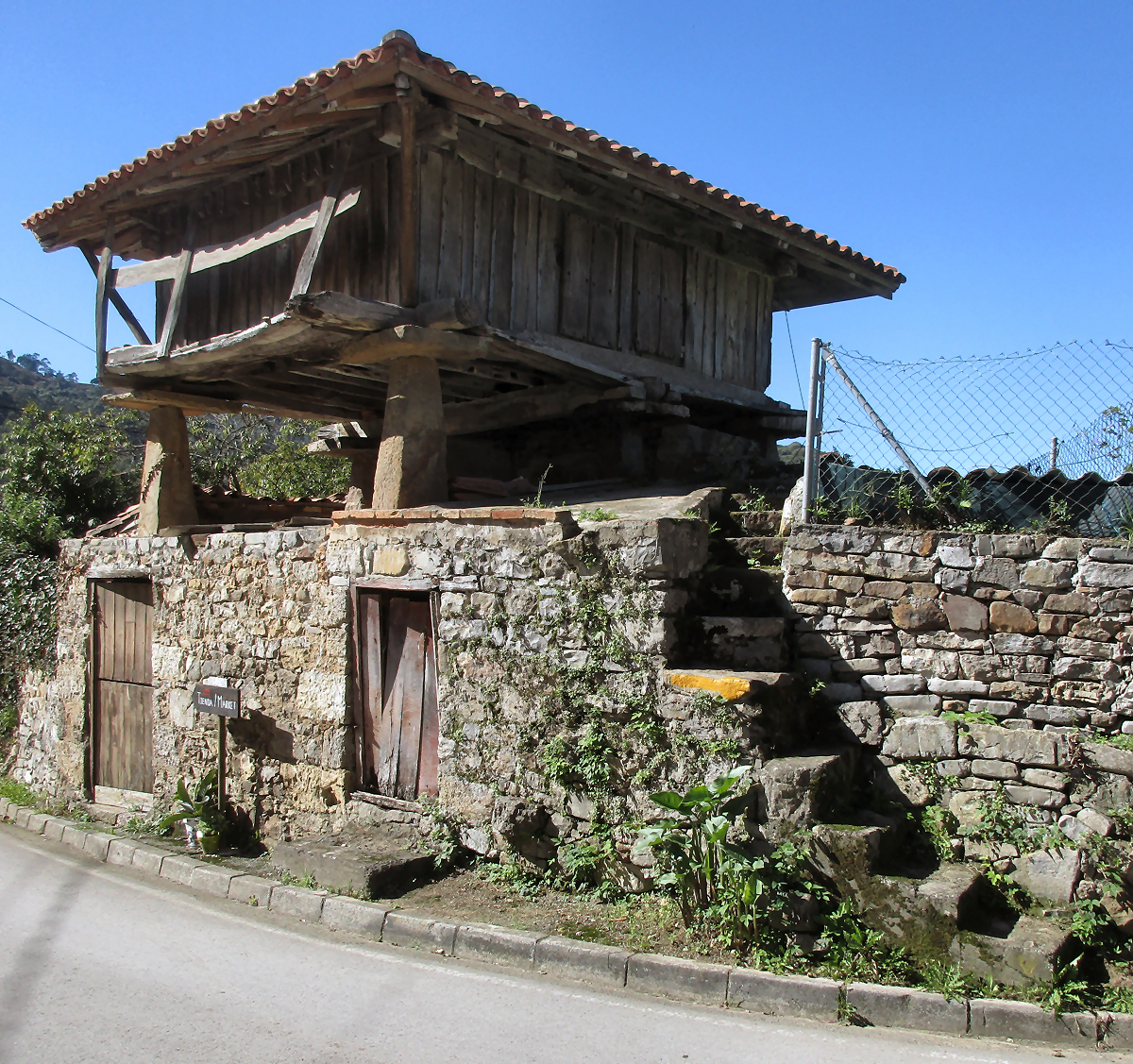
I ended my day looking for the albergue in the almost-dead village of La Isla. No matter where I turned, I could not find the usual waymarks. Finally, some locals on the street escorted me to Angelita’s house. She is the hospitera. You must go to her house first to register and then on to the albergue, which is about six blocks away.
It turns out that she is well-known on the Camino del Norte: A small woman who makes sure each line of the registration page is filled out correctly. When you first meet her, you might feel like she is impatient and a little grouchy, but it is not long before you realize she is just expecting you to understand Spanish. (And, after all, shouldn’t we be trying a little harder?) In reality, I believe she has the softest heart for the albergue and the peregrinos that come through, tired and ready for a warm bed.
Four more peregrinos arrived right behind me, so Angelita sat us at a table and we passed the registration book around, helping each other decipher the form.
The cost for the albergue bed in La Isla is 5 euros. On the Camino, I usually felt that this was not nearly enough to charge and I would add 3-5 euros as an additional donativo since I could easily afford it. For me it is important that these little municipal albergues are available and that they stay open for future peregrinos, like me. Until now, the extra gratuity was always gratefully accepted—but not by Angelita—oh no! A stickler for the rules, she was not about to take a cent more than the requested 5 euros!
Then we were directed to the albergue. I should have taken photos!! I got a single bed—no top bunk! The kitchen was well-equipped and easy to use, AND there was a free washing machine (a rarity). I was soooo glad I had not done my wash by hand in that grimy lavadora in Ribadesella last night. The machine even spun the clothes out so well that they were dry on the line by morning! Such little luxuries cannot be taken for granted on the Camino.
Let’s see…
Ribadesella albergue: Not welcoming, no kitchen, no useable washing area, packs stored downstairs, 20 euros! (To give them credit—the space was bright and airy and they did provide bed linens.)
La Isla albergue: Sweet hospitera, great kitchen, FREE washing machine, packs handy under our beds, some single beds, 5 euros! (We did have to use our own sleeping bags, which we are all used to doing.)
Inspired?
Want to learn more about how I travel?
Click Here


